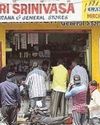
One of the more unusual features of the Indian economy relates to the banking sector, with bad loans of commercial banks becoming a serious problem even at relatively low aggregate credit to GDP ratios by international standards. Even at the peak in 2013-14, aggregate bank credit amounted to less than 54 per cent of the GDP, and it has declined relative to the GDP quite significantly thereafter (Chart 1).
The big collapse occurred in the aftermath of the demonetisation in November 2016. But bank credit was already decelerating before then, because of the structural problem of accumulated Non Performing Assets (NPAs) resulting from maturity mismatches and other concerns. This burdened banks and weighed down on their lending.
Demonetisation obviously disrupted banking — and therefore credit — for several months, and forced many borrowers, especially Small and Medium Enterprises, to seek recourse from NonBank Financial Companies (NBFCs). But even when the demonetisation could have been said to have run its course, despite some recovery, the bank credit to GDP ratios remained well below the average of the first half of this decade.
Bu hikaye The Hindu Business Line dergisinin September 10, 2019 sayısından alınmıştır.
Start your 7-day Magzter GOLD free trial to access thousands of curated premium stories, and 9,000+ magazines and newspapers.
Already a subscriber ? Giriş Yap
Bu hikaye The Hindu Business Line dergisinin September 10, 2019 sayısından alınmıştır.
Start your 7-day Magzter GOLD free trial to access thousands of curated premium stories, and 9,000+ magazines and newspapers.
Already a subscriber? Giriş Yap

Covid Presents An Opportunity For India
India must attract investors exiting China post-Covid. Streamlining of project clearances and relaxation in FRBM norms will help

Did Alternative Assets Shield You From Covid-19 Volatility?
The assets closely linked to stock and debt markets could not stave off the losses

How To Put Aircraft To Bed
Preserving grounded planes, to get them up and flying at short notice, is a challenging task. Ashwini Phadnis captures the process

There Can Be No Going Back On WFH
Covid-19 has fast-forwarded the shift to ‘work from home’. However, some face-to-face connect will always be needed

UN, WHO Urged To Ensure ‘Benefit Sharing' Of Covid-Related Data
Biopharma firms should reach vaccines, medicines to poor nations at an affordable price, say civil society bodies

With No Clear Signal From Rlys, States Explore Ways To Bring Back Migrants
Quarantine centres, cross-country buses being arranged even as migrants hop on to boats, trucks and ambulances

Centre Allows All Neighbourhood Shops To Open But With Riders
Final call will be taken by local authorities; shopping complexes that draw fewer ‘outsiders’ are permitted to operate

Covid Impact Relatively Muted In India
Compared to Italy and the US, India’s rate of infection spread has been slow. This can be attributed to the strict measures in place

How Global Trade Will Fare Post-Covid
China isn’t likely to lose its pre-eminent position soon. India, for one, will need to make manufacturing globally competitive

How To Curb Harassment In The Virtual Office
Training and sensitisation are essential. Institute a strict dress code and chat etiquette to ensure professionalism during video calls